There was some debate on G503 back in 2016 about whether a modified jeep for sale was a slat grille MB or not. After seeing the jeep for sale in October of 2016 on eWillys, Kees took a chance that it was a slat grille and bought it.
He had it shipped to Rotterdam, only to learn it was in worse shape than he’d hoped. What happened next was several years of hard work to bring it back into drivable condition. Here’s his story:
Hi Jeepers,
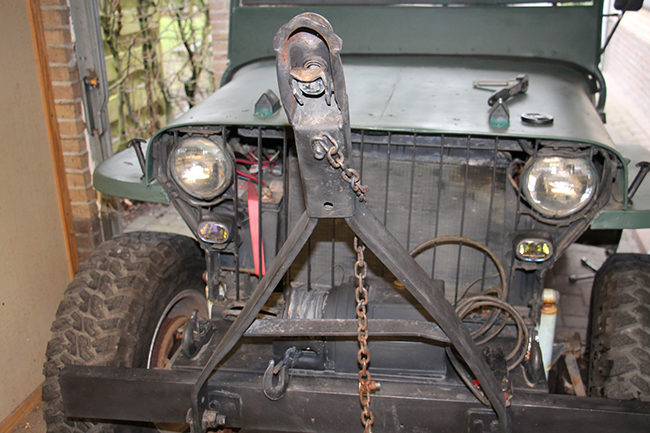
In October 2016, I bought a Jeep that I saw for sale on Ewillys. I had hoped it the Slat Grille I had been seeking, but was it really a Slat Grille?? A lot of folks on G503 were not convinced. Nonetheless, I took the risk.
When it arrived in Rotterdam I was shocked. It was in VERY bad shape. The body was covered in a layer of bondo, up to one inch in places. The sidepanels were almost gone. The gas tank was a drum bolted onto the cargo bed and the body was bolted to the frame with pieces of scrapmetal. There was a giant dent in the dashboard and the front of the jeep was a mess, replaced by bubba modifications. No effort had been made to clean the jeep, so it was covered with rust and dirt.
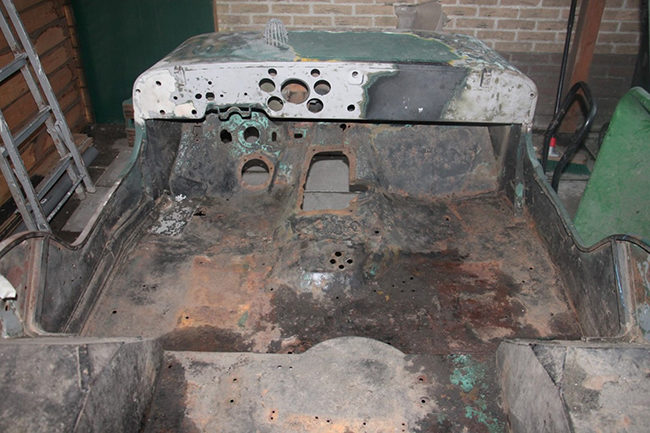
Did I feel lucky? Not at all. But, it’s not like I could send it back! So, I started forward, one step at a time.
The first thing I did was bring it to our version of the DMV for inspection. The VIN in the title was 11358, but we could not find it on the frame. Fortunately, we did find a body number of 15160. With those two ID numbers the department did some investigation with their American collegues and found out the VIN is 111358. That was great, because they were able to determine that it was an original Slat.
Once that was settled, I sent a lot of detailed photos to an friend who is an expert on Slats. It was from him I learned I had a lot of rare Slat details like axles, body, frame and some engine parts.
The first year was no fun at all. None. Zip. Nada.
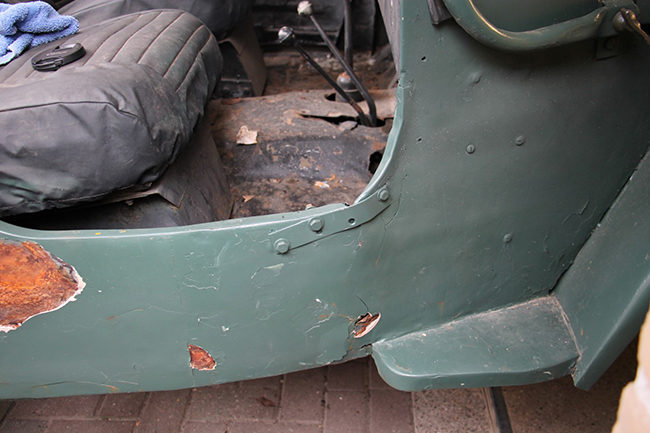
I spent month after month cleaning, sandblasting and torching bondo. Yet, under all that bondo, I found perfectly good, shiny metal in some places.
When the body was clean I brought it to a welding expert, a pensionado who liked to keep busy welding. Thankfully, he was not expensive because it took him many weeks to reshape the complete body. The only replacement he did where the 2 side panels and the fuel tank container. He was able to restore all the other parts. In the meantime I was busy cleaning the frame.
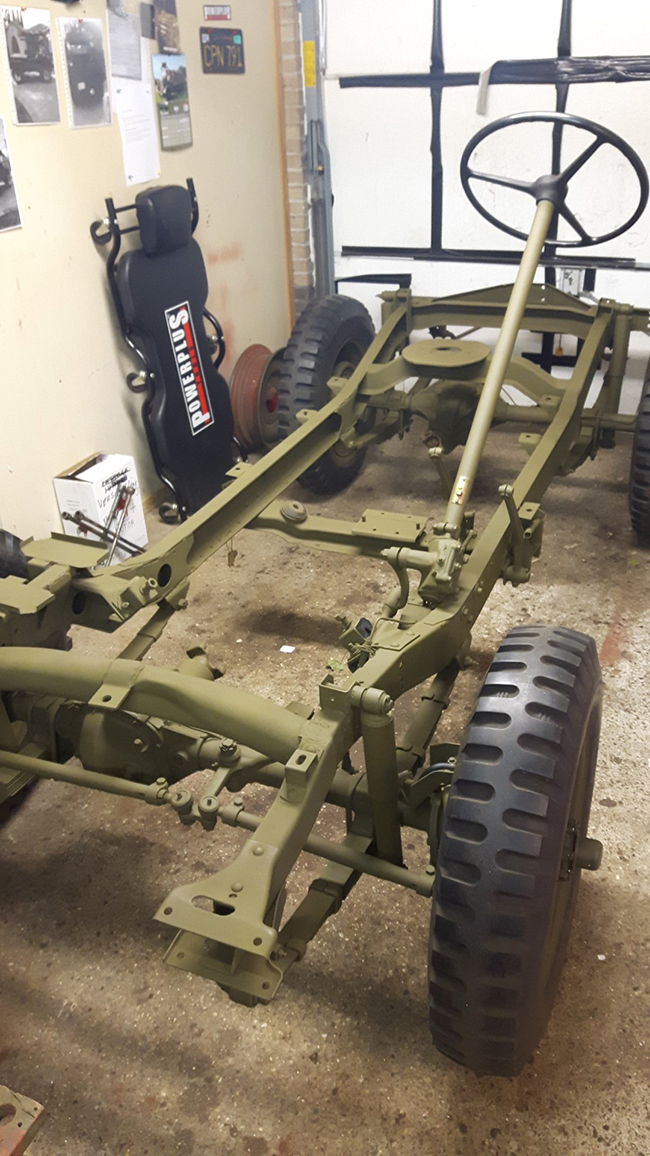
After he was ready with the body, he welded some replica front parts on the frame so I could assemble the bumper and install the replica frame number tag.
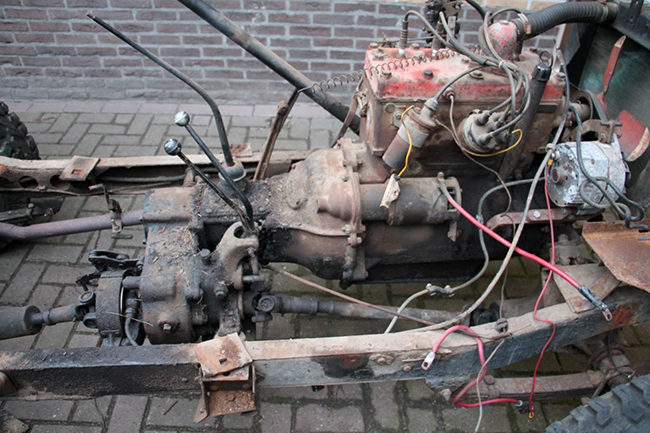
The next chapter in year 1 was engine and and the transfercase. Again, it took me a week to clean the complete engine but it was worth it. I discovered not only genuine parts, but also a lot of Ford GPW parts. They must have used a GPW in the past as donor because I discovered the letter F everywhere including in some of the valves. The gearbox, cluch, transfercase, and engine were all war-time era, which was a must for my restoration. The fact that there were Ford parts was not a problem as long as they were pre-1945. When the engine was completely clean, I discovered the engine number MB 442056 and the date of production: 7-8-44. I also found out the engine head was genuine Ford.
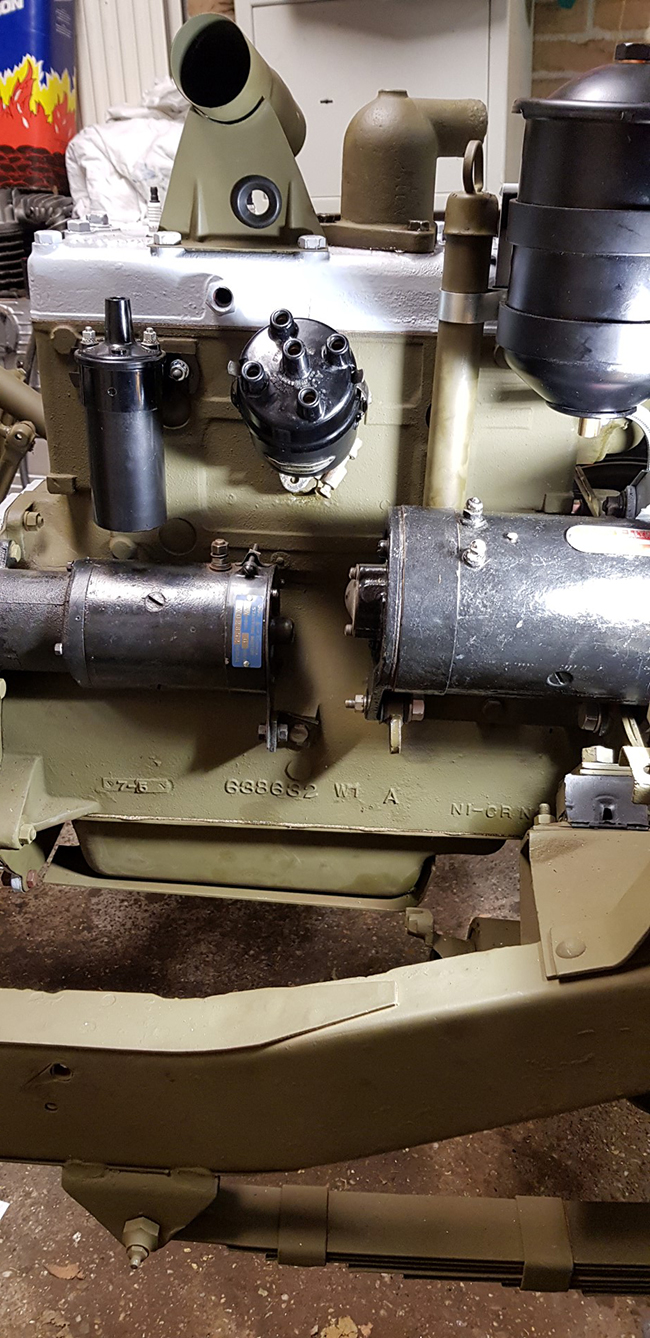
After cleaning, I not only restored the engine, gearbox and transfercase, but I also painted it in the original colors. When they were ready, I rebuilt the engine. Then I returned the electrical system back to 6 volts with a lot of very expensive original NOS parts (only the pancakefilter is a replica, the original was impossible to find in time).
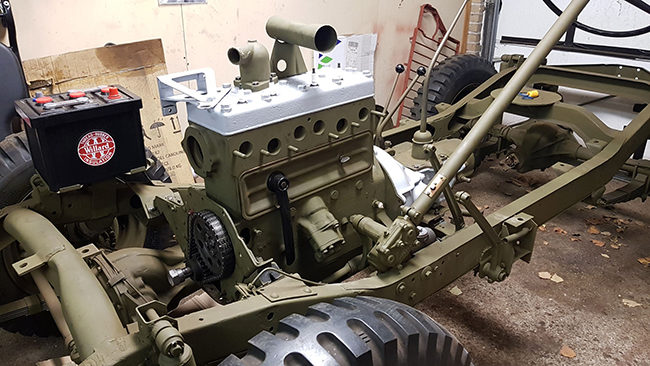
After the engine, I went on to restoring the original axles and differentials. When I opened the oilplug in the back, almost a gallon of brown gravy came out. The front differential was even worse: it had a gallon of water inside and not a trace of oil. However, despite the water the ring and pinion in the front were still in great shape. I only had to clean them. I was not so lucky with the rear, so I replaced that ring and pinion.
By the autumn of 2018, tow years after purchase, I wanted badly to drive the jeep! I was getting sick and tired of all the rust, oil and dirt. Still, I had to wait.
Finally, in 2019, I felt like the project was finally going forward nicely. I managed to buy an original Slatgrill drivers seat and a original gas gauge, but all other parts I had to buy new. Other gauges, the passenger seat, and backseat are all replicas. The same is true for most windshield parts. Only the outside windshield frame is original, though the brackets that hold the window to the body are the original copper.
The last part of the project was the most exciting: driving. The first time I drove it I had to sit on a plastic crate with a plastic jerrycan as a fueltank.
As of now, it is nearly ready. Next week I will drive it fort he first time as part of the 75th ememberance of Operation Market Garden. We will be with 600 war-time era vehicles. I’m so excited to be a part of that.
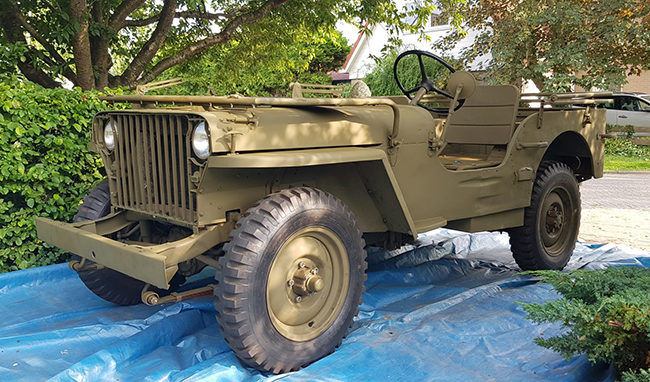
The car is for 95% complete. I have to do a lot a small things, like details in the body. I also have to paint the contract number, but I will do that when the car is 100% OK. And it is not complete OK. The oilpan is still leaking a little bit, but I will solve that this coming winter. Another problem is the original leafsprings I mounted in the back. They are much to weak. I added some extra leaves, but that did not help.
In the meantime, I will look for more original parts. If anyone can help me, I’d like to locate an original passenger seat and backseat!
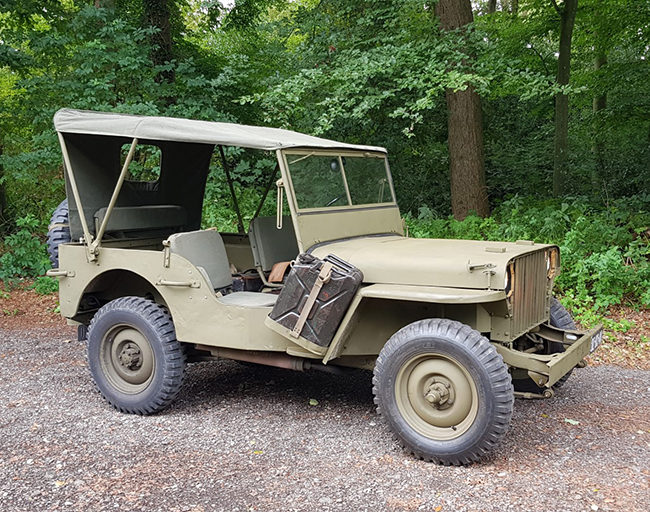
One additional note, the jerry can on the passenger side it an actual German-made jerry can (literally, a Jerry can) that I’ve had for years. They were popular with GIs and often used by them whenever they could find one.
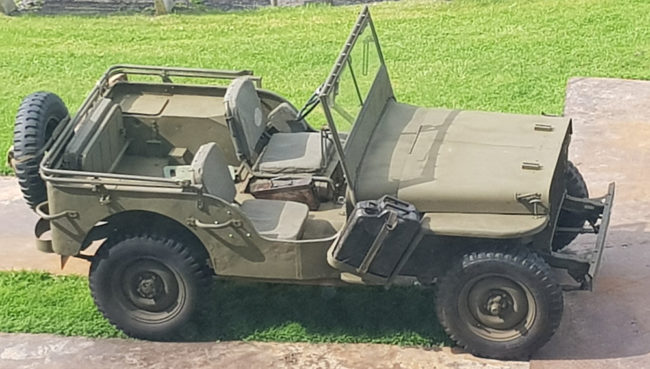
I would like to thank all people in the States that helped me without knowing it: articles on Ewillys, G503, and other sites helped me a lot and youtube was also very important when I was restoring the gearbox and axles (G503 and Metalshaper especially).
Thanks you all very much. By the way: I have my own blog with hundreds of photos: www.knutseljeep.blogspot.com. It is in Dutch, but you can see everything I did.
Best regards
KC
The Netherlands.

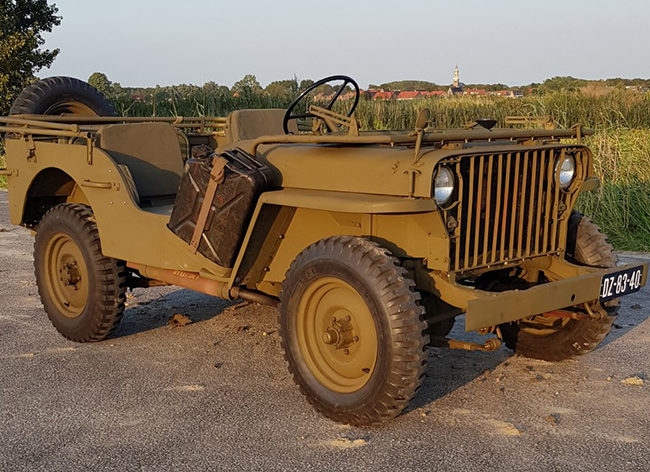
Congratulations on bringing this soldier back!Very nice work and the body work looks great!
Very nice.
Great work. I can’t imagine the amount of money that’s being spent on this restoration.
A great restoration job. The Jeep looks great! To be part of the 75th Anniversary Celebration of Market Garden should be worth the effort. Thanks for saving this old soldier.
KC
what did you find out about the history of the jeep?
you could have asked someone to look at the jeep before buying it. sounds like if given the chance to do this again you would pass? I would have thought you could have found one over there instead of having to pay freight to Europe.
Congrats and Gefeliciteerd. Very nice work.